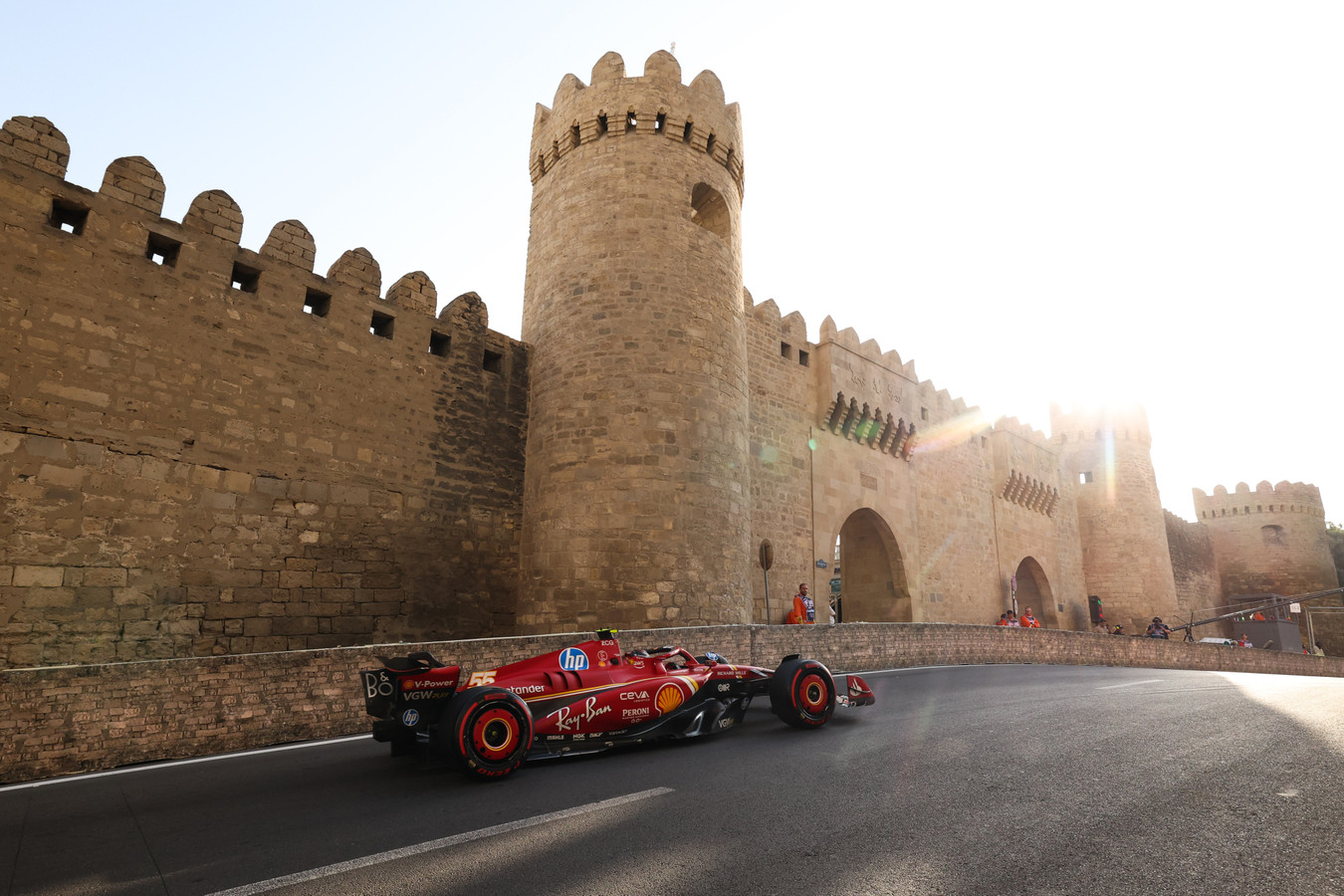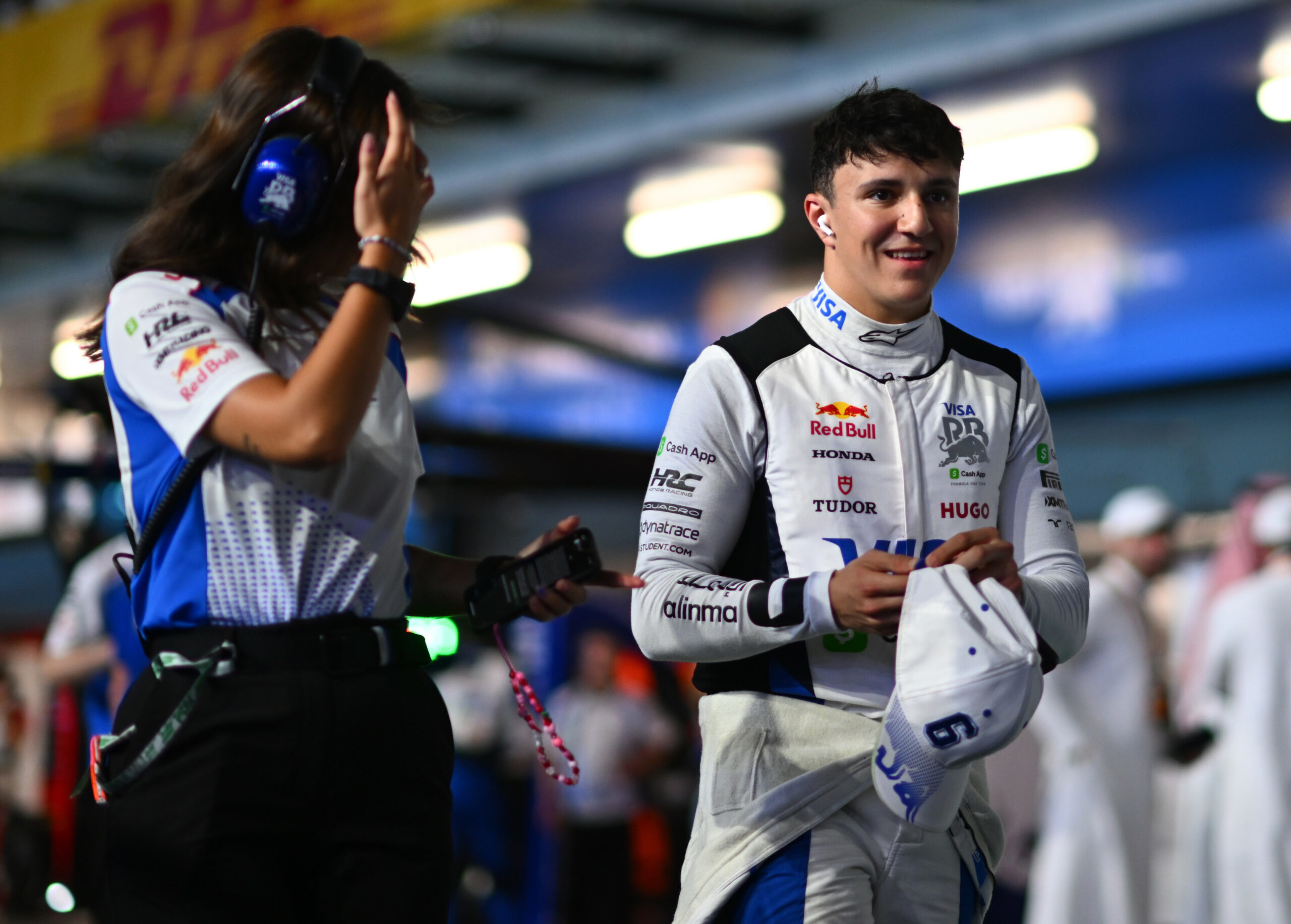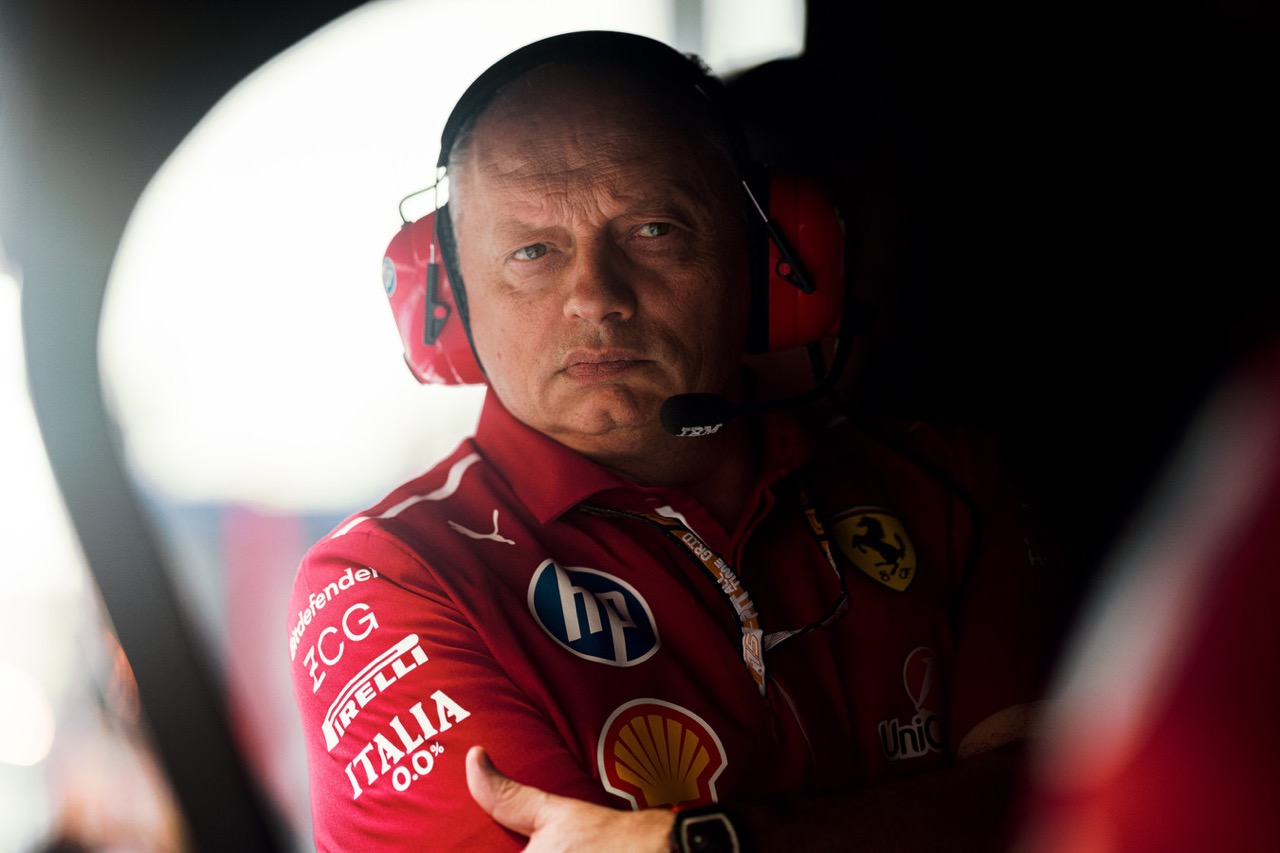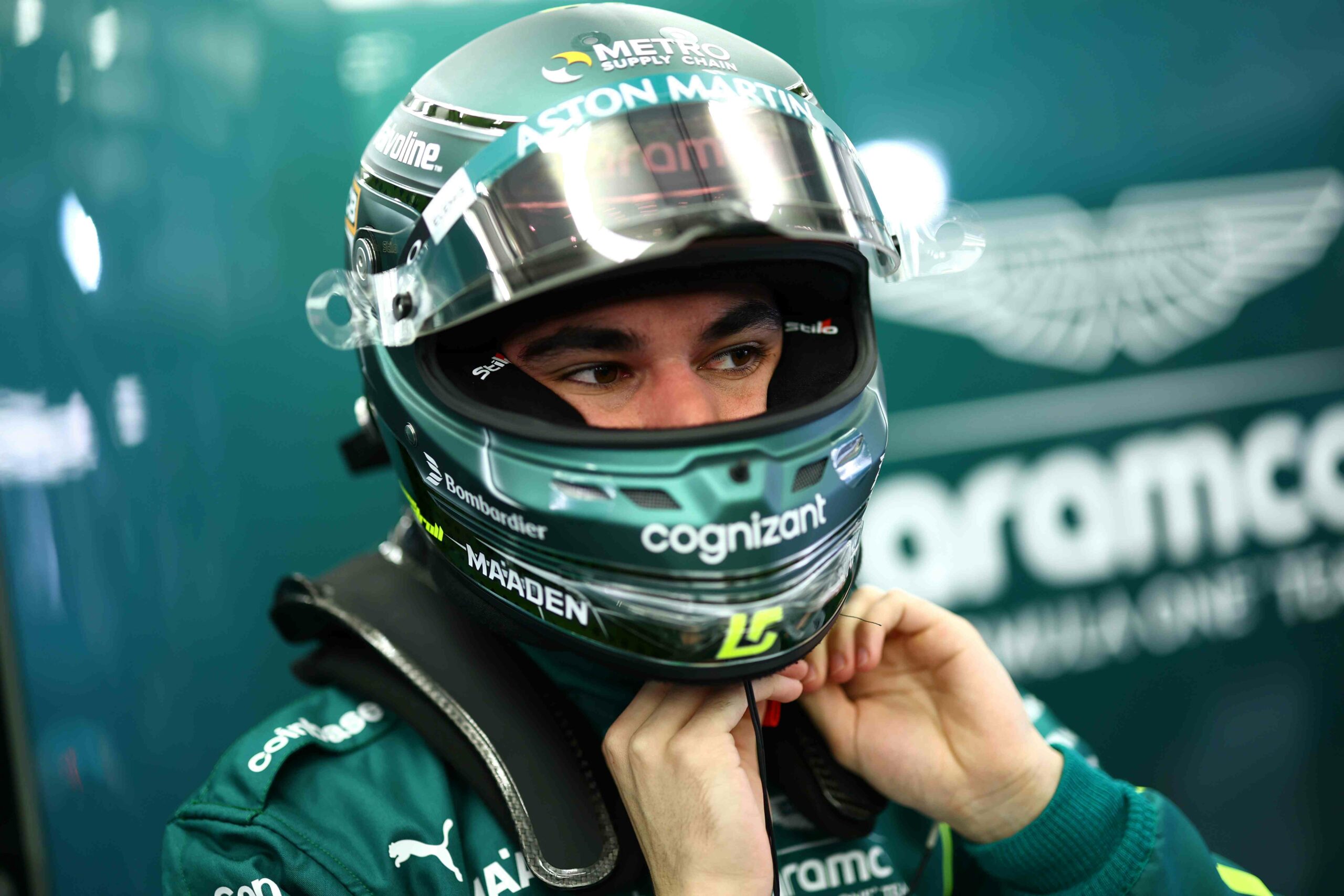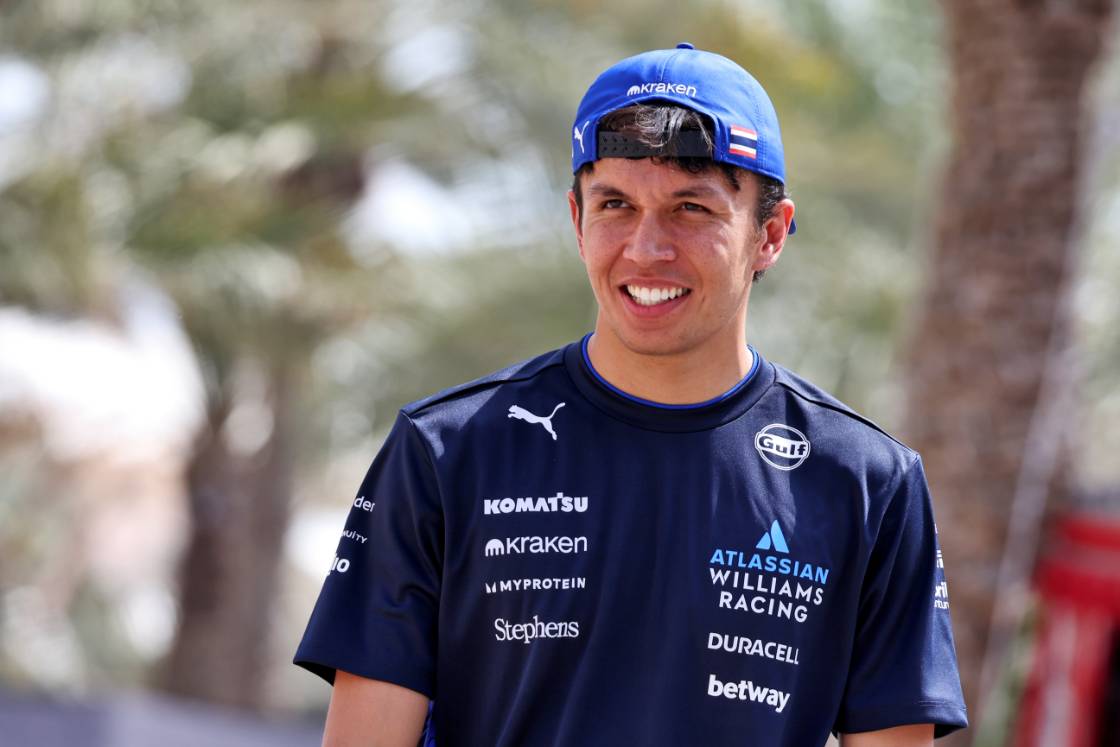Scuderia Ferrari’s Carlos Sainz will start the Azerbaijan Grand Prix race from the second row of the grid, after being denied a front-row start by McLaren’s Oscar Piastri in the final minutes of Saturday’s qualifying session. Despite this, the Spaniard expressed much optimism about his performance while speaking after the qualifying session, noting that he had not expected such a high qualifying position due to his previous struggles at the track.
“I never tend to aim too high in Baku because I know it’s a track that I normally struggle [with] in the past. So yeah, to be actually lining up is a good position for tomorrow. My race pace yesterday seemed strong. And yeah, we’re in a strong position to fight for better things tomorrow.”
Sainz reiterated the strong performance potential of Ferrari, McLaren, Red Bull and Mercedes in the post-qualifying press conference. The Ferrari driver was asked whether Ferrari or McLaren had the fastest car around the Baku City Circuit and stated that while his teammate Charles Leclerc’s strong performance in the SP24, especially at Baku, appeared to give the Maranello-based team an advantage, he believed that the top four cars were within only a few tenths of each other. This, he said, would make for an exciting race on Sunday.
“I think it’s extremely tight. I think it’s obviously one of… Charles was mentioning it’s one of his best tracks and he tends to always find a couple of tenths on the Ferrari around here and that probably makes us look like the fastest car, but I think it’s honestly within two-tenths between the top four cars and it makes it an exciting battle and an exciting race for tomorrow.”
During the press conference, Sainz was asked to describe his performance during the three qualifying sessions. He recalled that he had found a more suitable set-up in the third qualifying session (Q3) that had given him more pace than what he had in the first and second sessions.
However, he lamented having not found these adjustments earlier as he had not had enough time to become completely comfortable driving the SF24 under those settings.
“Yeah, but I managed to find a couple of things in Q3 that gave me a bit more pace than what I was showing in Q1 and Q2.
“Probably found it a bit too late. By the time I found them, I wish I would have had more laps before to get used to driving the car a bit like that.”
This echoed his earlier comments where he described his first run in Q3 as having been “encouraging” due to him having used an advantageous set-up.
“I was close in Q3 run 1 because I found out something with the setup with the car, with the front wing and with the toys that we play normally and that was encouraging.”
He described his second run in Q3 as being less encouraging, noting it as having been “nothing special” before adding that his teammate had done “one of his good laps there.”
“Then my Q3 run 2 lap was nothing special. I think he did one of his good laps there.”
Despite his limited run-time on the more-optimal set-up, Sainz stated, during the post-qualifying press conference, that the changes had made him feel more competitive, and stated that he was “glad” to have qualified third, especially given the historical differences between his and Leclerc’s typical performances in Baku
“And I felt like I was more competitive.
“But, you know, it’s always been a track that I struggle a lot at. It’s the best track for Charles and one of the worst ones for me, and I’m glad to be P3 and have a good position going into tomorrow, although it’s something that I keep working on around here because from FP1 I always tend to lack a bit of rhythm, and I need to build it up.”
He had previously expressed this happiness about qualifying, admitting that while he would not normally be happy to be some seconds off the top time, this was not the case at Baku due to his difficulties around the track especially when to his teammate’s historically strong performances.
“But yeah, probably in a normal track I would never be happy to be three- or four-tenths off. To be three- or four-tenths off in Baku… it’s such a long track where small details count and yeah, just not having 100 percent. I’m never 100 percent around here, plus it’s probably his best track.”
He also described the qualifying session as having been “decent” and added that he would need to see what could be done to optimise his performance during the race.
“It’s actually a decent quali for me and now I need to see what I can do in the race.”
When asked to elaborate on the findings that had led to him making these adjustments during the post-qualifying press conference, Sainz said that he could not go into much detail but described the changes as being associated with “little things” to improve the car’s performance in long braking zones.
He described this as being “interesting” especially as he was typically more confident around similar city circuits, but stated that he had been working toward improving himself around Baku.
“Nothing that I can reveal obviously in a press conference, because I would be revealing a bit too much, but just little things.
“Little things that you can do in quali to get the car to stop a bit better in the long braking zones, that gives you a bit more confidence to brake those three to five metres later that around here is fundamental.
“It’s interesting because I normally feel very comfortable in city tracks like Singapore, Monaco or any, but Baku has never been, in my 10 years in Formula 1, one of those. But every year I come back here trying to improve myself, trying to find more of an edge in my driving, but it just doesn’t come very natural to me.”
Sainz was asked why he typically struggled around the Baku City Circuit and replied that he did not know given his otherwise strong performances on street or city circuits. He did, however, suggest that the low downforce required could potentially be a contributing factor but noted that he often performed well at Monza, another circuit which typically required low downforce.
“I don’t know, because I’ve always been quick in city tracks. You know, Monaco and Singapore are tracks that I’m always very quick at.
“Maybe there’s something with the low downforce, but in Monza I’m very quick in low downforce.”
He also suggested that the “slippery” tarmac at Baku may have also contributed to his less-than-optimal performance around the circuit, noting that this typically resulted in the rear of the car moving around more than usual.
“I don’t know if it’s the tarmac. It’s a very picky, very slippery tarmac where the rear is moving around a lot and that makes Charles maybe a bit more comfortable.”
He continued, “As I said, I think it’s a combination of me never being quick here and him being the master of Baku.”
While Sainz added that this difference in performance resulted in the gap between him and Leclerc being “a bit big” for his liking, he acknowledged that it was natural for drivers to be stronger at certain tracks.
“The gap gets a bit big around here for my liking, but at the same time, there’s always tracks in the career of an F1 driver where you’re stronger than others, that come more natural than others. Unfortunately, this is one of those.”
Sainz also denied that the race being held so much later than in previous seasons had significantly impacted his performance in the SF-24, explaining that the track temperature had remained similar to that of previous years due to the buildings surrounding the track.
“Not really. The track temperature, because of the buildings, is actually very similar to every other year.
“What is very different is the tarmac,” he continued. “They didn’t clean it as much as other years and we feel how slippery it is. The deck seems similar also, so nothing really fundamentally changed.”
Later, during the post-qualifying press conference, Sainz also admitted that his and Leclerc’s different braking styles was a significant contributor to the difference between their respective performances in Baku, at least according to the data. He did, however, acknowledge that he had improved since the last Azerbaijan Grand Prix and stated that he believed that Ferrari was “still in the mix” for the win.
“Yeah, for sure. I mean, the braking, no. It’s all about braking here in Baku and having the confidence to stop the car as late as possible, trusting that the car then is going to turn in into the corner.
“And yeah, that’s where he excels around here and where he’s particularly comfortable from the beginning of FP1.”
“From my side, I don’t know why I don’t have exactly that same feeling that I have in Singapore, maybe on the higher downforce, or in Monaco with higher downforce, but it’s what it is. I still think I made some good progress. I’m going into tomorrow into the top three.
“So, yeah, I still think we’re in the mix.”
The 30-year-old was also asked about whether Ferrari’s inability to execute a tow between their drivers in the second qualifying session had affected the team’s qualifying strategy. The driver denied this, before explaining that the team had achieved their objectives even without the tow.
He said: “No, we both went out in the middle of Q2, which everyone was in the box. We elected to go for a clean track with no risk of yellow flags for the new set of tyres for Q2. It worked out perfectly, even though we were lacking two- or three-tenths of tow. But at least we put the banker lap in and we went through Q3. That was always the target.”
He elaborated on this later during the post-qualifying press conference, adding: “It was, I think, a matter of… I think we both went in the middle of the session in Q2 while every other team waited until the track evolution. We prioritised putting a lap in the middle of Q2 to be safe going into Q3, and that left us exposed to no tow. And yeah, we were just making sure that for Q3 we were having one. That is when it counts.”
The Spaniard also addressed the impeding issues that had occurred between himself and Red Bull’s Sergio ‘Checo’ Pérez. He stated that there were “no hard feelings” between himself and Pérez, but acknowledged that their close race pace, as well as that of the other drivers around them, would prove to be “exciting” both for spectators and the drivers themselves.
“No hard feelings between us.
“Just the only big thing is that we’re so close in terms of race pace that I think tomorrow there’s going to be 8 cars in the same race. That’s exciting for everyone, exciting for us, but it means we cannot put a foot wrong.
“Yeah, I think it’s going to be an exciting week.”
When asked if the team was confident ahead of the race, given their history of underperforming after strong qualifying sessions, Sainz stated that he believed that the team was stronger than it had been in previous seasons and said that he hoped that this would be reflected during Sunday’s race.
“Circumstantial. I think this year we seem to be, if anything, a bit stronger in the race, so let’s hope that this is the same case tomorrow.”
He added that if the team was not as strong as their qualifying performance suggested, it was important that they “keep pushing” as very small factors could affect the outcome of the race, as seen in the most recent races. He identified subduing the threat posed by McLaren’s Oscar Piastri as a priority for Ferrari, identifying the Azerbaijan Grand Prix as being a good opportunity for Ferrari to make up points in the Constructors’ Championship.
“And if not, keep pushing because, as I said, it could only be five degrees track temperature up or down to make Ferrari come alive or the Red Bull come alive, or the McLaren come alive or the Mercedes.
“We’ve seen it in the last five races, different winners, different cars being the quickest on Sunday, so keep our heads cool even if tomorrow our competition might seem stronger or not. Try and get Piastri one way or another.
“But it’s a good opportunity in the constructors, so we also need to make sure we keep it on track and bring home a double podium, 1-2 or whatever it comes.”
Sainz further expressed his expectations for the race, identifying the biggest challenges as being the red flags and Safety Cars which often disrupted the rhythm of the race. These events, he stated, typically made the race “unpredictable” as incidents would often “snowball” creating further incidents which would generate more chaos in the race.
“I think the biggest challenge of Baku normally is when there are red flags because that breaks the rhythm of the race. I remember one year there was two or three red flags on the same race and that really breaks the rhythm of the race. and then you have to wait while they clear the track, and obviously that is the biggest thing.
“Then the Safety Cars. Here it’s very difficult to keep temperature in the tyres, so whenever there’s a Safety Car restart, it’s very easy to front lock, very easy to go wide into the first three corners.
“So yeah, all these aspects make Baku an unpredictable race, because as soon as there’s one curve ball, like a Safety Car or a red flag, it actually generates even more chaos after, as a snowball effect.”

